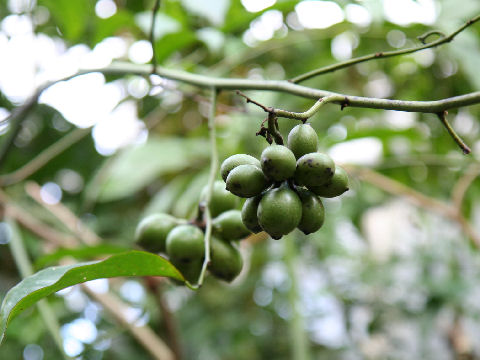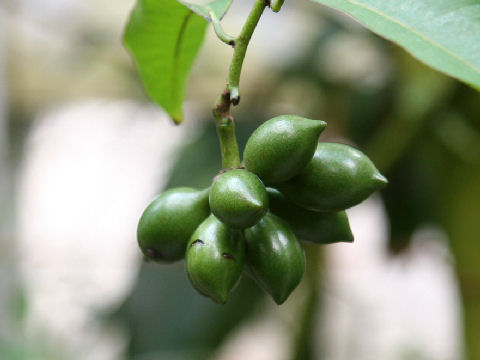 |




|

|
インドから東南アジア、マレーシア、中国南東部に分布しています。蔓性で、花梗がかぎ爪状になりこれで他の樹木などに絡みつき、長さは3.6メートルほどになります。葉は狭長楕円状披針形で互生します。葉に対生して花序をつけ、「イランイランノキ」に似た淡黄色の花を咲かせます。湿度が高いと甘い芳香があります。果実は倒卵形で房状につきます。台湾華語では「鷹爪花」、中国名では「鷹爪花(ying zhua hua)」。和名は、中国名の音読みから。
|

|
バンレイシ科オウソウカ属の常緑木本で、学名は Artabotrys hexapetalus。英名は Climbing ylang-ylang、Climbing ilang-ilang、Eagle's claw。
|

|
The Climbing ylang-ylang (Artabotrys hexapetalus) belongs to Annonaceae (the Custard apple family). It is an evergreen woody plant that is distributed from India to Southeast Asia, Malaysia and southeastern China. It is a vine with a claw-like flower stalk that twines around other trees and plants and grows up to 3.6 m long. The leaves are narrowly oblong-lanceolate and alternate. Inflorescences are produced in pairs on the leaves, and pale yellow flowers similar to those of "ylang-ylang" are produced. It has a sweet fragrance when humidity is high. The fruits are obovate in shape and borne in clusters. In Taiwanese Chinese, it is called "鷹爪花" and in Chinese "鷹爪花" (ying zhua hua). The Japanese name is from the Chinese name of this woody plant, which is read phonetically.
|

|
京都市左京区「京都府立植物園」にて、2006年10月25日撮影。
|



